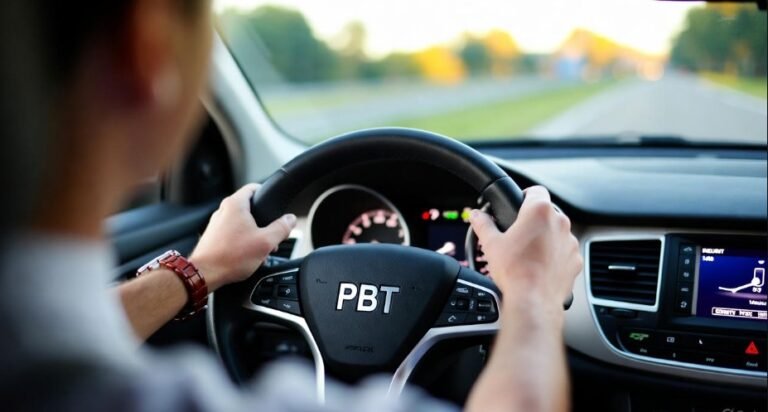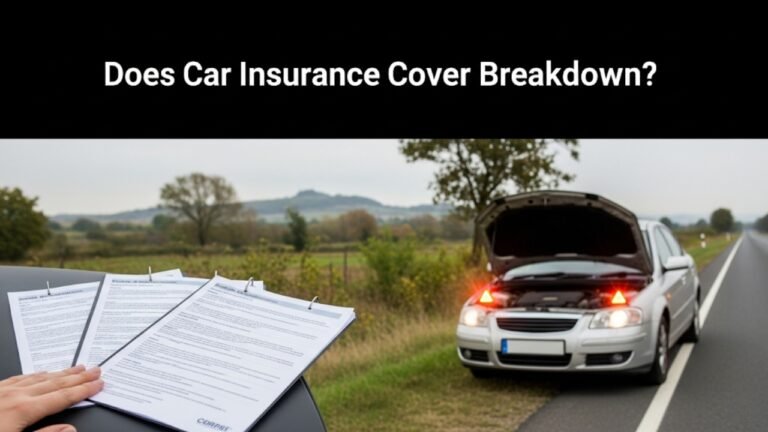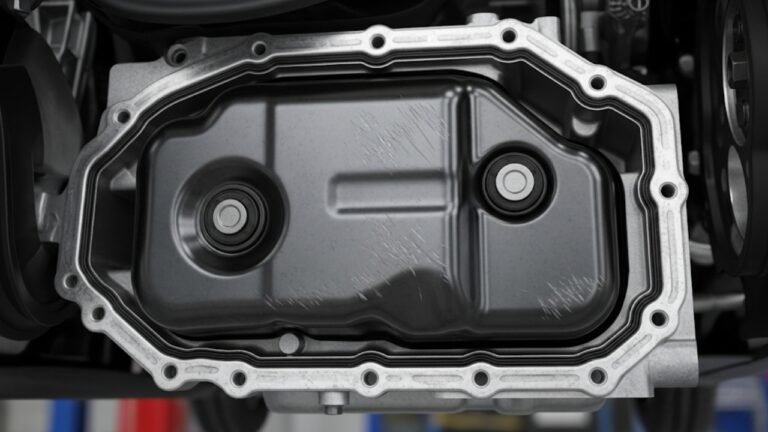How to Get a Spare Key for Your Car
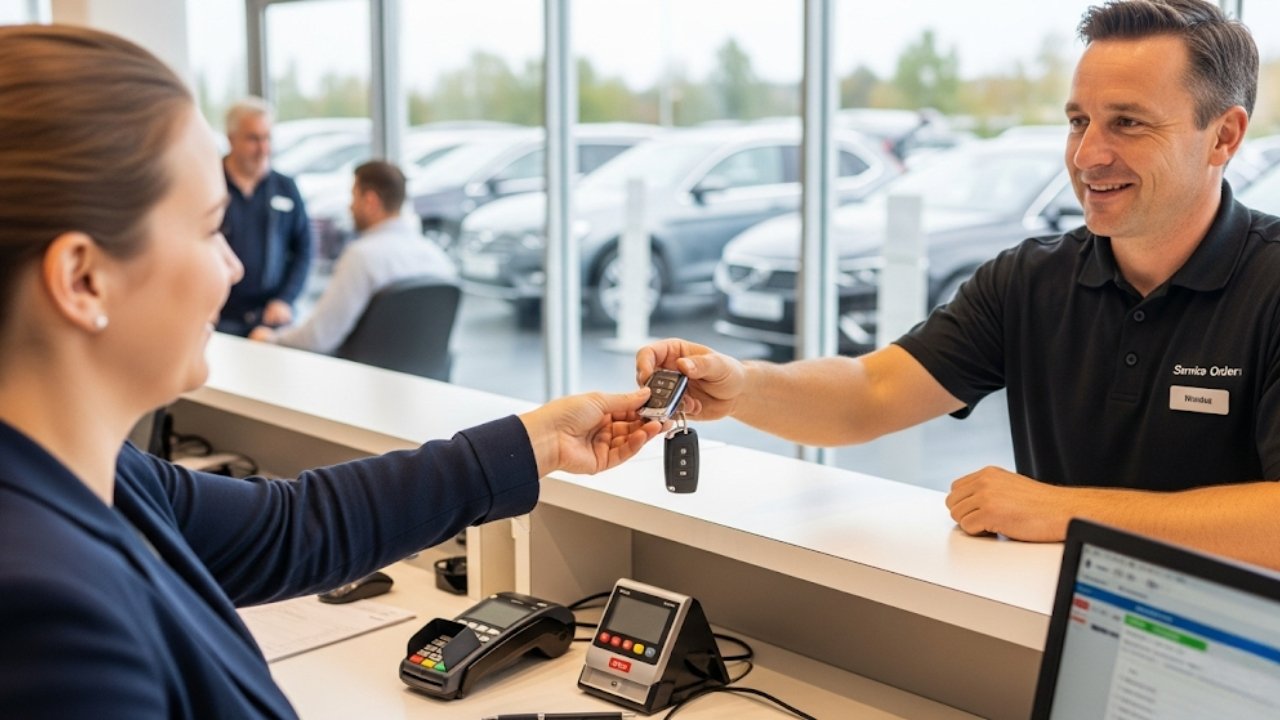
We’ve all been there—you’re running late, juggling your coffee and car keys, and boom—your key is nowhere to be found. Panic sets in. You check your pockets. Your bag. The couch cushions. Nothing. Now you’re stuck asking: “How do I get a spare key for my car?”
It might feel like a small thing, but not having a backup car key can snowball into a big mess. Whether you’re locked out or just thinking ahead, knowing how to get a spare key is something every car owner needs to learn. This guide walks you through it step-by-step—no tech talk, no confusing instructions, just clear advice from someone who’s been there.
Let’s make sure you’re never stranded again.
Why Having a Spare Key Matters More Than You Think
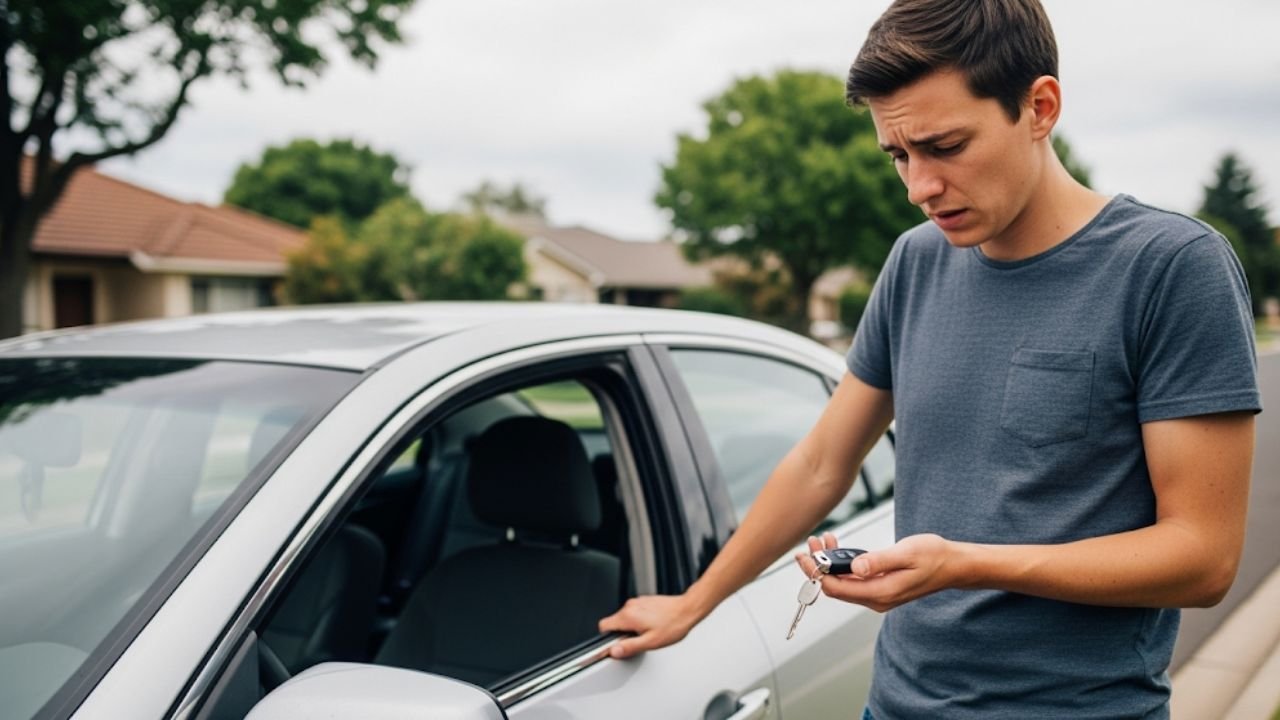
Having a spare key for your car can:
-
Save you from expensive towing services
-
Help avoid lockout emergencies
-
Make life easier for family members sharing the car
-
Give you flexibility when traveling
I learned this the hard way. A few years ago, I left my car keys inside my suitcase—right before a flight. I had no backup key, and the dealership was closed for the weekend. I had to wait three days just to get back into my own car. That experience taught me one thing: Always have a spare.
So, let’s dive into your options for getting one—without the headache.
Step 1: Figure Out What Type of Key You Have
Not all car keys are created equal. To answer “how do I get a spare key for my car”, you need to know what type of key you’re dealing with. Over the years, car keys have evolved big time. Here are the most common types:
| Key Type | Features | Cost to Replace |
|---|---|---|
| Traditional Key | No chip, just metal cut | $10–$30 |
| Transponder Key | Chip inside, requires programming | $50–$200 |
| Remote Key Fob | Unlocks doors remotely | $100–$250 |
| Smart Key (Proximity) | Push-button start, wireless access | $200–$500+ |
Most modern cars use transponder or smart keys, which means simply cutting a blank key at the hardware store won’t work. You’ll need special programming.
Pro Tip: Check your owner’s manual. It usually says what kind of key your car uses.
Step 2: Check If You Already Have a Spare (You Might Be Lucky)
Before jumping into replacement options, search your space like a detective. You’d be surprised how often spare keys hide in old bags, junk drawers, or under couch cushions. I once found mine inside an old shoebox I used for storing receipts!
Look in these places:
-
Your glove box
-
Coats you haven’t worn in months
-
Travel bags and suitcases
-
That mysterious junk drawer everyone has
If you find it, great! If not, don’t worry. There are still plenty of ways to get a spare.
Step 3: Visit the Dealership (The Most Reliable but Pricey Option)
Going to your dealership is the safest option—especially if you drive a newer car with a smart key or key fob. They have the tech to program your spare properly. The downside? It can be expensive.
When I got a spare key from the dealership for my 2019 Honda, it cost me $280, including programming. It took a couple of hours, but the result was flawless. No issues, no errors.
Here’s what you usually need:
-
Your car’s VIN number
-
Your registration and ID
-
Proof of ownership (like the title or insurance)
Some dealerships can cut and program the key on the spot. Others might take a day or two, depending on availability.
While it’s not the cheapest, it’s the most reliable way to ensure everything works correctly.
Step 4: Try a Local Locksmith (Affordable and Often Faster)
If you’re looking to save money, calling a local locksmith is a solid move. Many modern locksmiths have the tools to cut and program transponder and fob keys. Some even do mobile service—coming to you.
I once used a locksmith after losing a key on a road trip. They came to my hotel and had a spare programmed in under 30 minutes. Cost me half of what the dealership quoted.
Benefits of choosing a locksmith:
-
Often cheaper than dealerships
-
Mobile services available
-
Faster turnaround time
-
Friendly, personalized service
Just make sure they’re certified and have experience with your specific car brand. Some luxury vehicles, like BMW or Mercedes, may still require dealership programming.
️ Step 5: Order Online (But Read the Fine Print!)
You can buy replacement keys or fobs from websites like Amazon, eBay, or specialty stores. The prices are tempting—sometimes as low as $25. But be careful. Just because you buy the key doesn’t mean it’s ready to go.
You’ll usually need to:
-
Get the blank key cut
-
Have it programmed by a locksmith or dealership
Example: I once bought a key fob online for my Toyota. It was a good deal—$45—but I still had to pay $85 to a locksmith to program it.
If you go this route:
-
Double-check compatibility with your car make/model/year
-
Make sure it’s not a used fob (those often can’t be reprogrammed)
-
Buy from reputable sellers with good reviews
This option is best if you’re tech-savvy or don’t mind a bit of legwork to save money.
Bonus Tip: DIY Key Programming (Only Works for Some Cars)
Some vehicles let you program a spare key yourself. It’s not common with newer models, but worth checking.
How to know if your car allows DIY programming:
-
Search YouTube for “[Your Car Model] + DIY key programming”
-
Check your owner’s manual
-
Look up official forums or user groups
If it’s possible, the process usually involves:
-
Inserting the existing key
-
Turning it on/off in a sequence
-
Inserting the new key and repeating the steps
It sounds weird, but some older Fords and Chryslers allow it. If you’re lucky enough to have one of those, you might save a bundle.
How Much Does a Spare Car Key Really Cost? A Simple, Honest Breakdown
When you ask “how do I get a spare key for my car”, the next thought is usually, “Okay, but how much will it set me back?” Prices vary a lot. The type of key, your car brand, your location, and who you choose (dealer vs. locksmith) all play a role. Traditional metal keys can be as cheap as a dinner. Smart keys can feel like paying for a mini laptop. I’ve paid under $100 for a simple transponder key and over $300 for a push-button smart key, so I’ve felt both sides of the scale. Below is a realistic range to help you plan and avoid sticker shock.
Typical cost ranges:
-
Traditional metal key: $10–$30 (no programming)
-
Transponder key: $50–$200 (cut + program)
-
Remote key/fob: $100–$250 (hardware + programming)
-
Smart/proximity key: $200–$500+ (dealer or high-end locksmith)
-
Emergency lockout service: $50–$150 (varies by time/location)
-
Key fob battery replacement: $5–$15 (often DIY)
Why costs jump so fast:
-
Programming is the big expense.
-
Some cars need dealer-only tools.
-
Luxury brands bake security into the key system.
-
Mobile service fees apply if they come to you.
Money-saving tip: Call three places before you decide: your dealership, a trusted auto locksmith, and (if you’re brave and double-check compatibility) an online seller. Then compare. Many people skip the third call and leave money on the table.
️ Can Insurance, Roadside Assistance, or Warranties Cover Your Spare Key?
Here’s a quiet truth most people miss when they ask, “how do I get a spare key for my car”: you may not have to pay full price. Some insurance policies, roadside assistance programs, and extended warranties give partial or full coverage for lost or stolen keys. It’s not always obvious in the policy wording, so it’s smart to ask.
Places to check:
-
Comprehensive car insurance: Sometimes covers stolen keys or break-ins that damage your lock or ignition.
-
Roadside assistance (AAA, dealership plans, credit card perks): May cover lockout service and key replacement discounts.
-
Extended warranties / service contracts: Some include key fob replacement.
-
New car packages: Dealers sometimes throw in one free reprogramming or a discount on an extra fob at purchase — but only if you ask at the time.
What to say when calling: “Does my plan include lost or stolen key replacement, programming, or lockout service fees? If so, what’s my deductible and limit?” Keep it simple and direct.
VIN, Key Codes, and Proof of Ownership: What You’ll Need (and Why It Matters)
Whether you visit a locksmith or a dealership, you will almost always need to prove you own the car. This protects you. It also prevents scammers from making a copy of your key after snapping a quick photo of your license plate.
Have these ready:
-
VIN (Vehicle Identification Number) — usually on the dashboard (visible through the windshield) or on your registration card.
-
Government-issued ID — driver’s license or passport.
-
Vehicle registration or title — proof you own or legally use the vehicle.
-
Insurance card — sometimes asked as added proof.
For some cars, a key code may exist in the dealership database or in your original paperwork. If you have it, it can speed up cutting. But don’t worry if you don’t — pros can still cut and program using the VIN.
Locked Out Right Now? Your Calm, No-Panic Plan
Okay, you’re standing by the car, keys inside, and it’s getting dark. Panic floats in. Here’s a quick, calm checklist to follow — and yes, this still ties back to the core question, “how do I get a spare key for my car”, because the best time to plan was yesterday, and the second-best time is right now.
Do this:
-
Check every door and the trunk — you’d be shocked how often one is open.
-
Call your roadside assistance — if you have it. Often the fastest, cheapest option.
-
Call a local auto locksmith — ask for the total cost before they arrive.
-
If your car supports a mobile app (like Hyundai, Tesla, BMW, Kia, Ford, etc.) — try unlocking with the app.
-
If you already have a spare with someone you trust, call them. This is why you store it smart (more on that below).
Avoid smashing windows. It’s risky, costly, and can damage wiring or your airbag system.
Where (and How) to Store Your Spare Key So You Don’t Lose It Again
You’ve gone through the time, cost, and stress of getting a spare. Don’t undo it by tossing it in a random place. The best location is safe, out of sight, and easy for you (or a trusted person) to access in a rush.
Smart storage options:
-
Home safe with fire protection
-
Hidden lockbox (not obvious, not near your front door)
-
With a trusted family member or friend
-
Office drawer — if you commute daily
-
Magnetic under-car hide-a-key box — works only with traditional keys, and still risky if thieves know to check
Digital backup idea: If your car supports phone-as-key or digital NFC cards (common in EVs and newer models), set those up and store a backup card in your wallet. It’s the modern spare.
️ Trackers, Batteries, and Habits: Practical Prevention That Actually Works
You asked, “how do I get a spare key for my car”. Let me help you go one step further: how do I stop being in this mess again?
Practical things that genuinely help:
-
Attach a Bluetooth tracker (Tile, Chipolo, or AirTag where allowed).
-
Replace your key fob battery yearly or when range starts to drop.
-
Use a key hook or tray at home — same spot, every time.
-
Label your spare clearly so others in your home know what it’s for.
-
Photograph your key serial/model info (if printed) and keep it in a secure password manager.
-
If you share a car, create a rule: last driver drops the key in a specified place, no excuses.
❌ Costly Mistakes to Avoid (Please Learn From Mine)
Here’s where most people lose time and money when searching “how do I get a spare key for my car” — let’s help you dodge those traps.
Do NOT:
-
Buy a used key fob and assume it can be reprogrammed — many can’t.
-
Assume the cheapest locksmith can program your key — not all have certified tools.
-
Skip proof of ownership — you’ll be turned away, or worse, deal with sketchy services.
-
Ignore your owner’s manual — some DIY programming is possible and legit.
-
Leave your spare in the glove box — if the car is stolen, you handed over the second key too.
-
Wait until you lose the only key — then you’ll pay more, wait longer, and maybe tow the car.
Traveling, Renting, and Buying Used Cars: Special Cases You Should Know
Life gets more complex when you travel, rent, or buy second-hand. These are the cases where the usual advice around “how do I get a spare key for my car” can shift a bit.
When traveling or on a road trip:
-
Save a locksmith contact in the areas you’ll travel through (urban areas are easier than rural).
-
Use a waterproof mini key safe in your luggage.
-
Turn on car apps and backup unlock options before you leave.
If you’re buying a used car:
-
Always ask for all keys upfront — many sellers “forget” they lost one, and that becomes your problem.
-
If there’s only one key, negotiate the price down to cover the cost of a spare.
-
Reprogram or replace keys if you think a previous owner still has a copy (security risk).
With rental cars:
-
Keep keys on a carabiner attached to a belt loop or bag.
-
If you lose a rental key, expect a hefty fee and possibly a long wait.
-
Travel hack: take a photo of the key (front and back) and the key tag in case you need specifics.
A Simple, No-Panic Checklist You Can Screenshot
When you think, “how do I get a spare key for my car”, run through this:
Your quick plan:
-
Identify your key type (traditional, transponder, fob, smart).
-
Call three places: dealer, certified locksmith, and (optional) online vendor to compare total cost.
-
Gather documents: VIN, ID, registration, insurance.
-
Get one spare now, not when you lose the last one.
-
Store the spare safely (not in the car).
-
Add a tracker and replace fob batteries yearly.
-
Set up digital unlock options if your car supports them.
-
Teach your household the key rule: same spot, every time.
Quick Buyer’s Table: Best Option by Situation
| Your Situation | Best Option | Why |
|---|---|---|
| Brand new car, still under warranty | Dealership | Accurate programming and coverage |
| Mid-range car, out of warranty | Certified locksmith | Cheaper and fast mobile service |
| Budget is tight, you’re patient | Buy online + local locksmith | Lowest cost if you verify compatibility |
| Lost all keys | Dealership or high-end locksmith | Needs full reprogramming and proof of ownership |
| Older car with simple key | Hardware store or locksmith | Quick, cheap, no programming |
| Road trip emergency | Roadside + mobile locksmith | Fastest real-world solution |
♂️ FAQs: Straight Answers to the Questions You Keep Googling
1) Can I get a spare key without the original?
Yes. A dealership or a qualified locksmith can cut and program a new key using your VIN and proof of ownership. It may cost more, but it’s doable.
2) How long does it take to get a spare key?
Traditional keys take minutes. Transponder and smart keys can take 30 minutes to a few hours, depending on the tools and your car model.
3) Can I program a new key myself?
Sometimes. Older models from brands like Ford, Chrysler, and GM sometimes allow DIY programming if you have at least one working key. Newer cars usually need pro tools.
4) Is a locksmith as good as a dealership?
Often, yes. Many auto locksmiths are trained and equipped to handle modern keys. For some luxury brands, the dealer might still be necessary.
5) What if my key fob battery is dead — am I stuck?
Not always. Many cars have a hidden slot or a method to start the car by holding the dead fob against the start button. Check your manual.
6) Can I use my phone as a spare key?
If your car supports digital keys or a mobile app, yes. Brands like Tesla, Hyundai, BMW, Kia, Ford, and others offer this. Set it up before you need it.
7) Is buying a key fob from Amazon or eBay safe?
It can be — if you verify it’s new, compatible, and programmable for your make, model, and year. You’ll still need a locksmith or dealer to program it.
8) What’s the cheapest way to get a spare?
For many, it’s: buy an online fob + pay a locksmith to cut and program it. But always run the numbers. Sometimes a locksmith’s all-in price beats the piecemeal route.
Final Thoughts: Don’t Wait Until You’re Stuck on the Sidewalk
Asking “how do I get a spare key for my car” is smart. Acting before you’re stranded is smarter. A spare key is not just a tiny metal object or a plastic fob — it’s freedom, time saved, and stress avoided. The best part? Once you do it right, you won’t have to think about it again for years.
So take the small hit now to avoid the big hit later. Call the dealer. Phone a locksmith. Order the key. Program it. Store it smart. You’ll thank yourself the next time life throws a curveball and your keys go missing right when you need to go.

